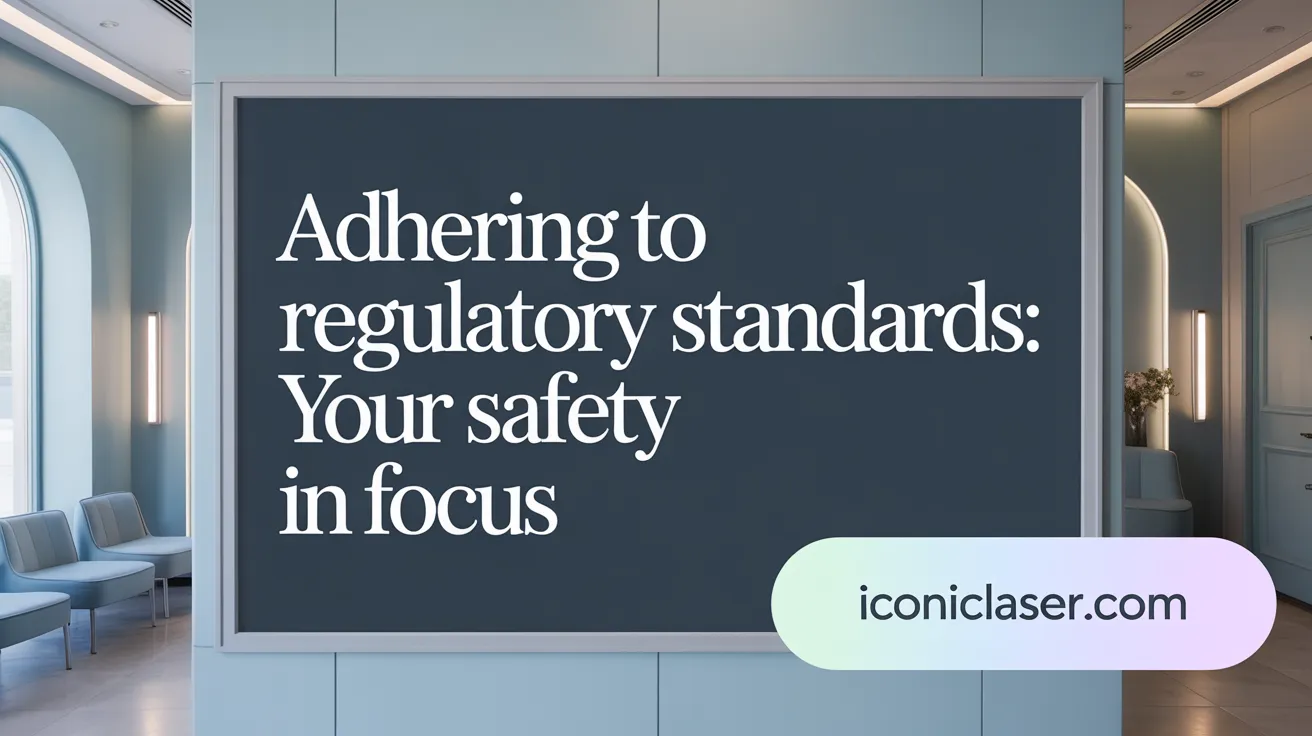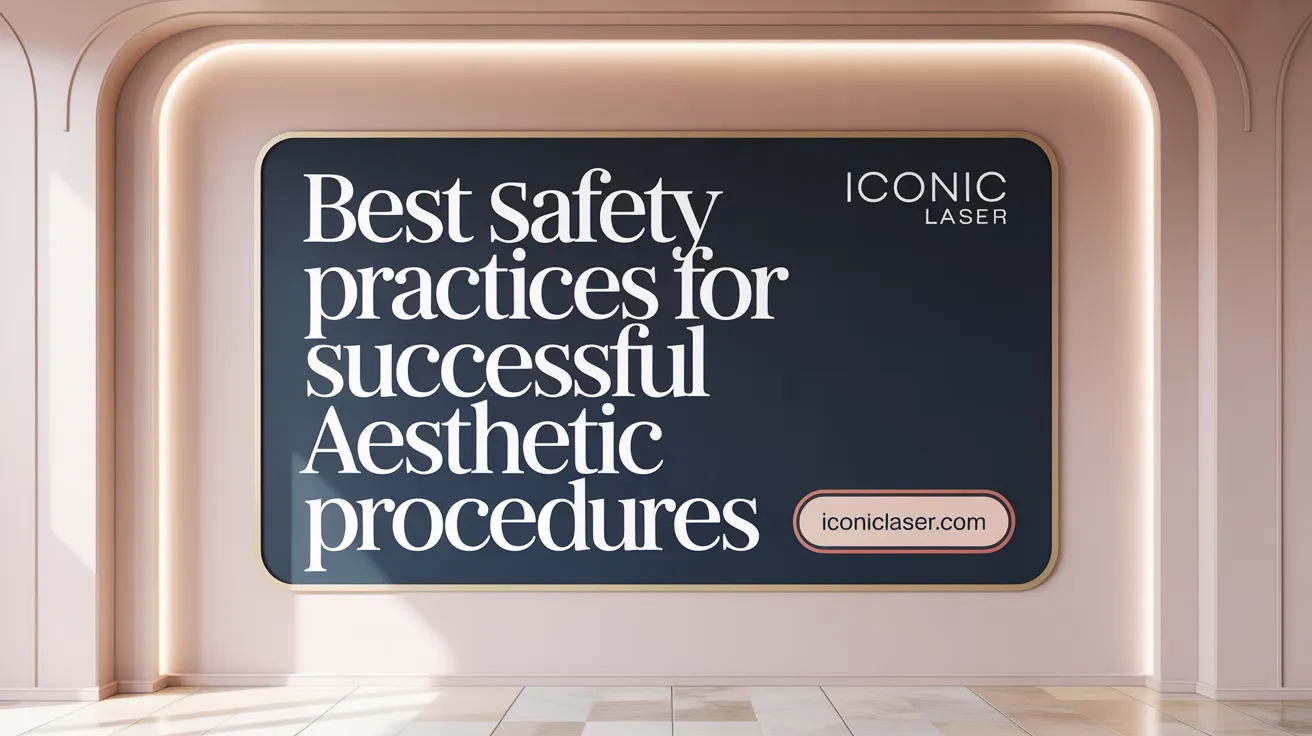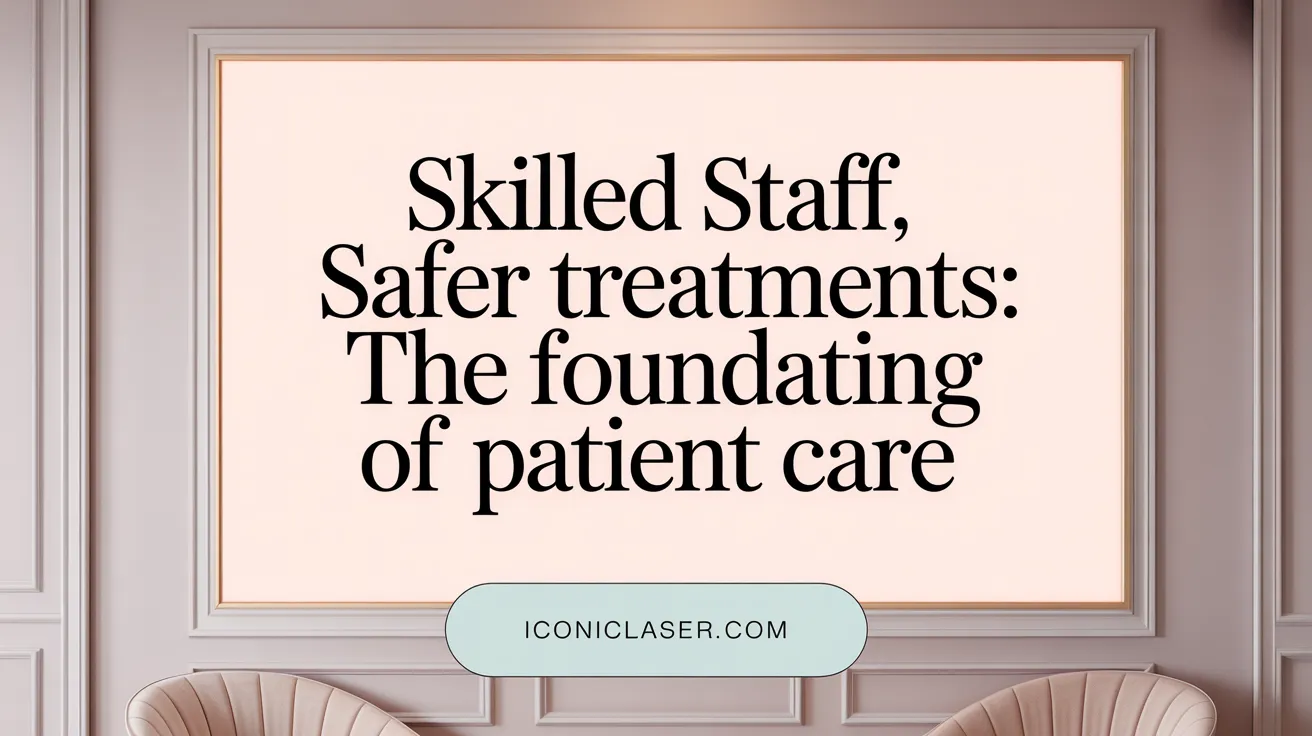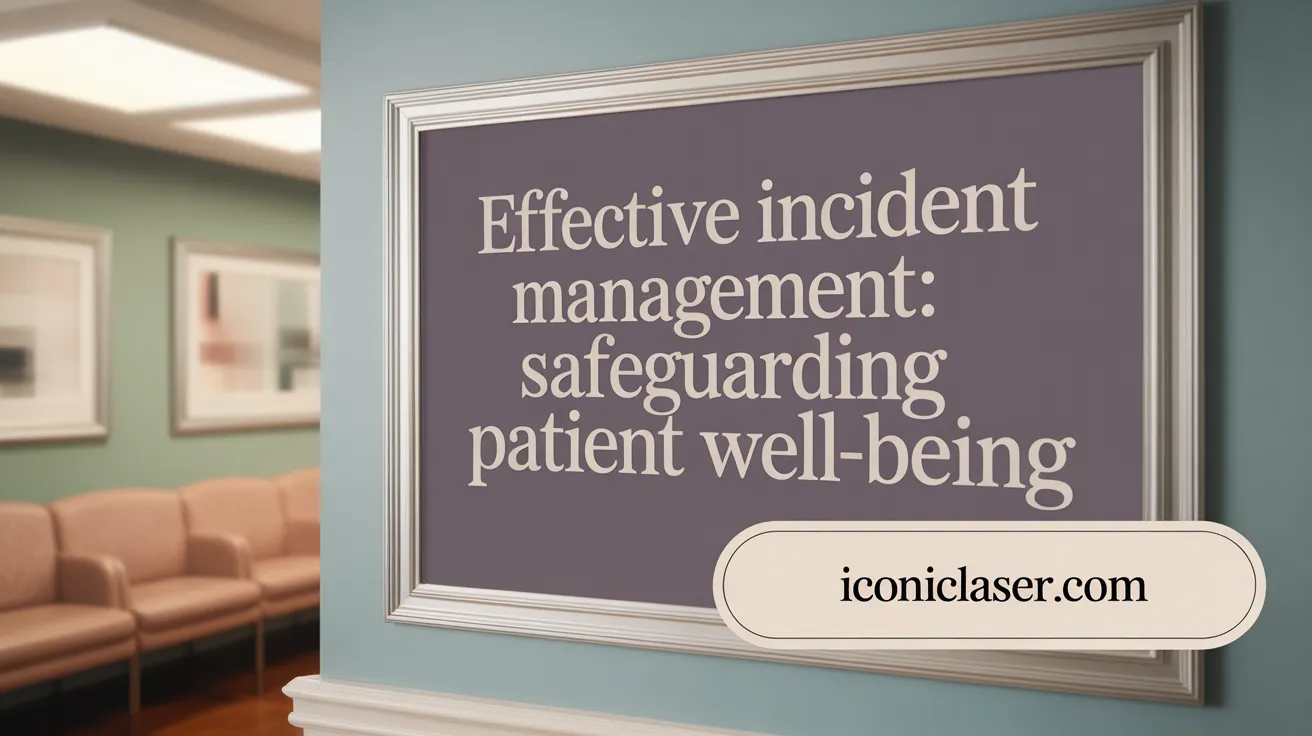Introduction to Patient Safety in Medical Aesthetics
Patient safety is the cornerstone of trust and success in medical aesthetics. As the demand for aesthetic procedures rises globally, it is crucial to uphold rigorous standards, ethical practices, and compliance requirements that protect patients. This article explores the essential guidelines and standards that govern patient safety within medical aesthetics, addressing ethical principles, regulatory frameworks, clinical protocols, training requirements, incident management, aseptic techniques, and authoritative recommendations.
Ethical Principles and Challenges in Medical Aesthetics Safety

What are the key ethical principles and common challenges related to patient safety in medical aesthetics?
Ethical principles serve as the foundation for safe and responsible practice in medical aesthetics. Respecting patient autonomy involves providing clear, honest information about procedures, risks, and expected outcomes, empowering patients to make informed decisions aligned with their values and preferences.
Beneficence and non-maleficence require practitioners to act in the best interest of the patient, ensuring treatments are appropriate, safe, and performed competently to minimize harm. Justice emphasizes equitable access to aesthetic treatments and fair treatment regardless of socioeconomic status or background.
Informed consent is a critical pillar, necessitating comprehensive discussions about potential risks, benefits, and realistic outcomes tailored to individual needs. It involves shared decision-making, where practitioners and patients collaborate to choose suitable options, enhancing trust and safety.
However, navigating ethical challenges can be complex. A significant challenge is managing patient expectations, often inflated by social media, which can create unrealistic perceptions of perfection or immediate results. Practitioners must carefully communicate limitations and possible adverse effects.
There is also a risk of procedures being performed by inadequately trained practitioners, which can lead to complications. Maintaining professional integrity involves strict adherence to qualification standards, ongoing education, and certification.
Regulatory diversity presents another obstacle, as differing laws and guidelines across regions may affect safety standards and procedural oversight. Unvalidated techniques and counterfeit products further threaten patient safety, emphasizing the importance of using approved, high-quality materials.
Avoiding procedures on individuals with unrealistic expectations or psychological conditions like Body Dysmorphic Disorder is essential. Such cases may require psychological evaluation and appropriate management outside aesthetic intervention.
Overall, ethical practice in medical aesthetics demands continuous education, transparency, and unwavering commitment to patient well-being. By upholding these principles, practitioners can mitigate risks, foster trust, and promote safe, effective aesthetic care.
Regulatory Standards and Compliance in Medical Aesthetics

What regulatory standards and compliance requirements are essential for ensuring patient safety in medical aesthetics?
Patient safety in aesthetic medicine hinges on strict adherence to various regulatory standards and legal requirements. Medical spas and practitioners must operate within the licensing frameworks set by national and regional authorities, ensuring that only qualified professionals perform procedures within their scope of practice.
A key component of safety is the implementation of laser safety protocols aligned with ANSI Z136 standards. These guidelines offer comprehensive measures to prevent laser-related injuries, protecting both staff and patients. Proper facility accreditation, including hygiene standards based on European Standard EN 16844, ensures that treatment rooms follow strict cleanliness and infection control practices.
Regulatory oversight also involves compliance with guidelines from authoritative bodies such as the Food and Drug Administration (FDA), the American Society for Dermatologic Surgery and Aesthetic (ASDSA), and the Association of Medical Spa_professionals (AmSpa). These organizations advocate for responsible practices, including the use of approved products, transparent marketing, and safe treatment protocols.
Maintaining meticulous records of all patient treatments, encounters, and adverse events is critical. Proper documentation supports legal compliance and allows for effective tracking of patient outcomes. Additionally, reporting adverse events through systems like the CAPER registry enables ongoing monitoring of procedure safety and facilitates prompt corrective measures.
Facility owners and practitioners should ensure that all personnel are trained and certified according to current standards, engaging in continual medical education and regular skill assessments. This ongoing training helps keep staff updated on emerging safety protocols and procedural innovations.
A comprehensive safety approach also involves conducting routine audits, adhering to OSHA standards for bloodborne pathogens, and ensuring that supervision protocols are strictly followed, especially for high-risk procedures such as injections or laser treatments.
Overall, integrating these regulatory components promotes a culture of safety, mitigates legal risks, and ultimately enhances patient confidence in aesthetic treatments.
Safety Protocols and Best Practices in Aesthetic Procedures

What are the recommended safety protocols and best practices for conducting aesthetic procedures?
Ensuring patient safety in aesthetic medicine starts with comprehensive assessment and screening. Practitioners should perform detailed evaluations, including reviewing medical history, allergies, and psychological considerations, to identify any contraindications before proceeding.
Aseptic techniques are paramount. This involves strict hand hygiene, the use of sterile gloves, masks, and other personal protective equipment (PPE). Proper sterilization of all equipment and treatment areas is essential to prevent infections. Use of high-quality, approved materials reduces the risk of adverse reactions.
Knowledge of anatomy and proper training are critical for safe procedures. Practitioners must understand facial and body anatomy to avoid complications such as vascular occlusions or unwanted aesthetic outcomes. Regular skill assessments, including practical exams and peer reviews, help maintain high standards.
Documentation is vital. Detailed records of treatments, patient consent, and clinical findings support legal compliance and facilitate quick response if complications arise. Informed consent ensures patients are aware of potential risks, benefits, and alternatives.
Ongoing professional development, including workshops, certifications, and updates on safety guidelines, keeps practitioners well-informed. Emergency preparedness, such as knowledge of complication management and having protocols in place, further safeguards patient well-being.
Creating a culture of safety involves selecting qualified professionals who operate within their scope of practice, following the latest regulatory and industry guidelines, and maintaining open communication with patients.
By adhering to these practices, medical spas and practitioners can minimize risks, enhance patient satisfaction, and uphold the highest standards of care in aesthetic treatments.
Staff Training and Competency: Cornerstone of Patient Safety

How important is staff training and competency in maintaining patient safety within medical aesthetics, and what standards should be met?
Staff training and overall competency are fundamental in ensuring patient safety in the field of aesthetic medicine. Well-trained practitioners possess the necessary knowledge and skills to perform treatments safely, minimizing risks and improving patient outcomes.
Continuous education is essential in keeping practitioners updated with the latest techniques, safety protocols, and regulatory requirements. This involves participating in workshops, webinars, and certification programs that focus on the evolving landscape of aesthetic treatments.
Regular skill assessments, including practical exams, written tests, peer reviews, and case discussions, play a crucial role in maintaining high standards. These evaluations ensure that staff remain competent and capable of managing both routine procedures and potential complications.
Adherence to Standard Operating Procedures (SOPs) guarantees consistency in practice. SOPs encompass everything from patient screening and contraindications to informed consent and post-treatment care, ensuring that safety protocols are followed uniformly.
Credential verification and license monitoring are ongoing processes that verify staff qualifications and assure compliance with legal standards. Thorough background checks during hiring, along with continuous monitoring of professional licenses, help prevent unqualified practice.
Establishing competency benchmarks through accreditation by professional organizations ensures that staff meet industry standards for knowledge and skill. These benchmarks include foundational training, accreditation, and recertification.
In summary, prioritizing staff education, evaluating skills regularly, maintaining accreditation standards, and following strict SOPs significantly contribute to minimizing adverse events, enhancing treatment safety, and fostering trust with patients.
| Aspect | Description | Additional Details |
|---|---|---|
| Continuous Education | Workshops, webinars, certification | Keeps staff updated on new procedures |
| Skill Assessments | Exams, peer reviews, case studies | Ensures ongoing competency |
| SOP Compliance | Standardized protocols for treatment | Promotes consistency and safety |
| Credential Verification | Background checks, license monitoring | Verifies practitioner qualifications |
| Benchmarking & Accreditation | Industry standards, professional bodies | Establishes competency levels |
Maintaining high standards of staff training and competency is essential for the safe and effective delivery of aesthetic treatments, ultimately fostering patient trust and clinical excellence.
Incident Reporting and Managing Complications Effectively

What procedures should be in place for incident reporting and managing complications in medical aesthetics?
Medical aesthetics clinics must establish robust procedures for incident reporting and complication management to ensure patient safety and continual improvement of care quality. These procedures should include a comprehensive incident reporting system designed to capture all adverse events, no matter how minor or severe, to help identify trends and prevent future issues.
The reporting system should be straightforward and accessible, encouraging staff to document every incident transparently. Clear protocols must be in place for the prompt recognition and assessment of complications. This includes immediate steps to stabilize the patient, prevent further harm, and initiate appropriate medical management.
Standardized documentation is vital; records should detail the nature of the adverse event, the interventions provided, and the outcomes achieved. Accurate documentation supports legal compliance, clinical review, and ongoing quality improvement efforts.
Staff training is essential to equip team members with the skills needed to recognize early signs of complications, interpret clinical symptoms accurately, and respond effectively. This includes ongoing education in facial anatomy, emergency response procedures, and current best practices.
Moreover, legislation and mandatory reporting requirements, such as national registries or internal audit systems, should be followed to enhance transparency and accountability. These regulations often mandate reporting of certain adverse events to health authorities, contributing to a centralized database that aids in collecting data for risk analysis.
Incorporating these procedures facilitates a culture of safety, encourages learning from incidents, and ultimately improves patient outcomes. Regular review and refinement of incident management protocols are necessary to adapt to new technologies, techniques, and regulatory changes, ensuring that patient care remains safe and effective.
Aseptic Techniques and Infection Control Measures
What aseptic techniques and infection control measures are recommended to reduce risks during aesthetic treatments?
Ensuring patient safety in aesthetic medicine hinges on strict adherence to aseptic techniques and infection control practices. Practitioners should begin with comprehensive hand hygiene protocols, including washing with antimicrobial soap or using alcohol-based hand sanitizers before and after procedures. Proper sterilization of all instruments, whether reusable or single-use, is critical. This involves following validated sterilization procedures such as autoclaving and ensuring that all equipment is free from contaminants.
The use of personal protective equipment (PPE) is essential; practitioners should wear sterile gloves, masks, gowns, and eye protection during treatments to create a barrier against infections. Skin preparation plays a vital role—disinfectants like chlorhexidine (2%) or isopropyl alcohol (70%) are recommended to cleanse the treatment area thoroughly prior to any procedure. These antiseptics help reduce microbial load and prevent post-treatment infections.
Maintaining a clean treatment environment is equally important. This includes disinfecting surfaces regularly, proper disposal of sharps and waste, and avoiding the re-use of single-use items such as needles or gloves. Proper waste management not only minimizes contamination but also adheres to safety regulations.
Patient screening before treatment is crucial. Patients should be assessed for active infections, skin diseases, or other contraindications that could lead to transmission or complications. Treatments should be deferred if necessary.
European standards, particularly EN 16844, provide detailed hygiene guidelines for aesthetic procedures. They emphasize treatment room cleanliness, adequate ventilation, and regular environmental cleaning. Advanced disinfection techniques—like UV-C light, hypochlorous acid, and other sanitizer technologies—are recommended to further minimize microbial presence.
By consistently following these infection control measures, practitioners can significantly reduce the risk of infections, complications, and adverse events, promoting safe and effective aesthetic care.
Maintaining High Safety Standards in Clinical Practice
What guidelines exist for maintaining high safety standards in clinical practice within medical aesthetics?
Ensuring safety in medical aesthetics is a top priority that requires strict adherence to established guidelines and best practices. These include following professional conduct codes and comprehensive standards developed by authoritative organizations, emphasizing ethical practice, patient care, and safety.
Continuous education is fundamental. Staff members should regularly participate in workshops, webinars, and certification programs to stay updated on the latest techniques, safety protocols, and regulations. Routine skills assessments, such as practical exams, written tests, peer reviews, and case discussions, help verify competency and promote high standards of care.
Patient screening processes are vital. Practitioners must conduct thorough assessments to identify contraindications, allergies, or potential risks, utilizing detailed medical histories and physical examinations. Informed consent is another cornerstone, ensuring patients are fully aware of treatment benefits, risks, and possible side effects.
Developing and strictly following Standard Operating Procedures (SOPs) is essential for consistent safety practices. These should cover all aspects of treatment, including patient screening, treatment protocols, and post-procedure care.
Laser safety and other energy-based treatments require compliance with ANSI Z136 standards, which provide safety guidelines for laser and intense pulsed light procedures. Regular safety audits and adherence to local, state, and federal regulations help minimize risks and protect both patients and staff.
Supervision by qualified medical professionals ensures medical procedures are performed within appropriate scope of practice. Proper oversight includes ongoing training, certification verification, and supervision during high-risk procedures like laser treatments and injections.
Accurate and truthful marketing practices are essential. Ethical advertising that accurately describes services and outcomes preserves patient trust and complies with legal standards.
Finally, implementing incident reporting systems that are confidential and non-punitive supports continuous safety improvements. Regular review of safety protocols and adherence to infection control standards—such as proper disinfection, PPE use, and waste disposal—are critical to maintain a safe clinical environment.
In sum, a comprehensive approach involving education, strict protocols, professional oversight, ethical marketing, and continuous safety monitoring is necessary to uphold high standards in medical aesthetic practice.
Expert Recommendations and Authoritative Guidelines
What are the expert recommendations and authoritative body guidelines on enhancing patient safety in aesthetic medicine?
Improving patient safety in aesthetic medicine relies heavily on guidance from leading professional organizations and regulatory agencies. The American Society for Dermatologic Surgery Approved Society (ASDSA), the Food and Drug Administration (FDA), and the American Med Spa Association (AmSpa) have all established standards emphasizing rigorous practitioner training, supervision, and continuous quality improvement.
Key recommendations include ensuring practitioners are well-trained in anatomy, complication management, and latest techniques through ongoing education. Regular skills assessments — such as practical exams and peer reviews — help verify practitioner competence.
Standard Operating Procedures (SOPs) are vital. Clear protocols on patient screening, informed consent, and procedural steps help minimize risks. These documents foster consistency and safety across different practitioners and clinics.
Ethical practice rooted in core principles like patient autonomy, beneficence, non-maleficence, and justice should underpin every treatment. Transparency about risks, managing societal influences, and addressing misinformation from social media are increasingly important to uphold trust.
Moreover, the development of confidential incident reporting systems—like morbidity and mortality meetings—facilitates root-cause analysis of complications and near misses.
Regulatory compliance with local, national, and international standards is essential. This includes licensure, proper supervision, and adherence to safety protocols concerning suitability and contraindications.
Practitioners must stay updated with annual training, participate in multidisciplinary collaborations, and maintain transparent communication with patients. These practices foster a culture of safety, accountability, and continuous learning.
In summary, expert sources recommend that the commitment to patient safety involves thorough practitioner training, transparent practices, systematic incident review, adherence to regulatory standards, and ongoing professional development to maintain high care standards in aesthetic medicine.
| Guideline Source | Focus Areas | Recommendations | Additional Notes |
|---|---|---|---|
| ASDSA, FDA, AmSpa | Practitioner Training | Continuous education, skills assessment, supervision | Supports standardized protocols and safety culture |
| European Standard EN 16844 | Hygiene and Disinfection | Pre-treatment skin disinfection, room sterilization | Defines hygiene standards for aesthetic procedures |
| OSHA, ANSI Z136 | Safety Protocols | Use of PPE, laser safety measures | Emphasize environmental safety and staff protection |
| CAPER Registry | Adverse Event Monitoring | Reporting and analyzing incidents | Supports evidence-based improvements |
By adhering to these guidelines and recommendations, aesthetic medicine practitioners can significantly enhance patient safety, build trust, and deliver high-quality care that aligns with current professional standards.
Medical Oversight and Delegation in Aesthetic Practices
Licensed physician or NP/PA leadership
In aesthetic medicine, it is essential that medical spas are led by a qualified, licensed physician or, in some regions where laws permit, Nurse Practitioners (NPs) or Physician Assistants (PAs) operating independently. These professionals bear the ultimate responsibility for patient safety and the overall quality of treatments administered.
Scope of practice and procedural delegation
Staff involved in aesthetic procedures must operate within their specific scope of practice. Only qualified and trained professionals should perform treatments, with medical professionals providing supervision according to established protocols. Procedures like laser treatments, injections, and other energy-based devices require that the practitioners have appropriate medical training and understanding of anatomy.
Supervision requirements for high-risk procedures
High-risk procedures such as ablative laser treatments or injectables must be conducted under direct supervision of a licensed medical professional with specialized training. This ensures immediate assistance in case of complications and helps maintain safety standards.
Role of medical director in patient safety
The medical director or overseeing physician holds the primary role in ensuring patient safety. They develop treatment protocols, supervise staff, and ensure adherence to legal and safety standards. The director also oversees staff training, quality assurance, and incident reporting to continually improve practice standards.
Limitations on unlicensed personnel performing procedures
In many jurisdictions, unlicensed personnel, such as aestheticians or medical assistants, can only provide specific non-medical services under supervision. They are generally not authorized to perform invasive or high-risk treatments unless explicitly permitted by law, underscoring the importance of proper oversight.
| Aspect | Responsible Party | Legal Considerations | Typical Procedures | Importance of Oversight |
|---|---|---|---|---|
| Leadership | Licensed Physician or NP/PA | Ensures compliance, patient safety | Overall medical direction | Foundation of safe practice |
| Procedure Delegation | Qualified Staff | Legal scope of practice | Laser, injections, skin treatments | Maintains safety and effectiveness |
| High-Risk Procedures | Supervised by licensed professional | Strict supervision required | Ablative lasers, injectables | Critical for avoiding complications |
| Staff Limitations | Unlicensed personnel under supervision | Legal restrictions in many regions | Non-invasive skin care | Ensures adherence to laws |
Adhering to these standards and guidelines helps create a safe environment for both patients and staff, reducing risks and enhancing treatment outcomes.
Quality Assurance through Audits and Continuous Improvement
Regular audits of practices and documentation are essential for maintaining high standards in aesthetic medicine. These audits include reviewing treatment records, staff performance, and adherence to established protocols. By systematically checking these areas, clinics can identify gaps and areas needing improvement.
A thorough review of incident and adverse event reports helps in analyzing causes and preventing future occurrences. Implementing a confidential, non-punitive incident reporting system encourages staff to report errors or near misses without fear, fostering a culture of safety.
Based on collected data, medical spas should develop and update quality improvement initiatives. These may include revising SOPs, enhancing staff training, or adopting new safety measures in response to observed trends.
Using data-driven insights is crucial for refining safety protocols. Quantitative metrics, such as infection rates or complication incidences, guide clinicians in making informed decisions and improvements.
Transparency and accountability are also vital. Maintaining clear records of practices, incident reports, and corrective actions promotes trust among staff, patients, and regulatory bodies. Regularly sharing safety performance findings helps reinforce a culture committed to continuous quality and patient safety.
Conclusion: Upholding Rigorous Safety Standards in Medical Aesthetics
Patient safety in medical aesthetics demands a multifaceted approach encompassing ethical integrity, stringent regulatory compliance, comprehensive clinical protocols, and continuous staff education. By adhering to evidence-based guidelines, maintaining high competency, and fostering a culture of transparency and accountability, aesthetic practitioners can significantly mitigate risks and enhance patient outcomes. Incident reporting and infection control further fortify safety, while authoritative recommendations guide best practices amid evolving technologies. Ultimately, steadfast commitment to these standards ensures that medical aesthetic treatments are delivered responsibly and safely, reinforcing patient trust and advancing the field's credibility.
References
- Ensuring Patient Safety in Medical Spas
- Patient Safety in Aesthetic Procedures: What to Know
- Standards for aseptic techniques in medical aesthetic ...
- GUIDELINES FOR NON-INVASIVE MEDICAL AESTHETIC ...
- Tips for Medical Aesthetics Compliance
- Medical Spa Safety Resources: A Comprehensive Overview
- How to Ensure Patient Safety in Aesthetic Medicine
- Tips for Medical Aesthetics Compliance
